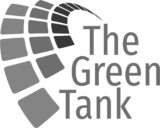‘Human Stories’ series demonstrates promising yet unfulfilled potential of EU Emissions Trading System
Examples of climate funding being put to good use in Greece, Portugal and Belgium suggest how revenue from the EU Emissions Trading System (EU ETS) can be better used to enhance climate action. This potential can be further boosted by eliminating the freebies awarded to the wealthiest polluters.

The European Union’s self-described ‘cornerstone policy to combat climate change,’ the Emissions Trading System (EU ETS), has the potential to deliver what it says on the label. That was the message of members of the Life ETX consortium at the launch of their ‘Human Stories’ project today (Tuesday 23 January) in Brussels.
Life ETX is a consortium of 10 environmental NGOs working at national and European level campaigning to make the EU ETS work for citizens and the climate. The event showcased the ‘Human Stories documentaries’ to highlight how ETS revenue can be better used to bankroll positive climate and social solutions. These films were shot on location by Carbon Market Watch in collaboration with Bond Beter Leefmilieu in Belgium, the Green Tank in Greece and Zero in Portugal.
The launch event also drew upon the ground-breaking Carbon Market Watch report the ‘Emissions Aristocracy’ that exposed how 30 companies are responsible for half of EU ETS emissions
“This key EU policy claims to combat climate change yet allows some of the EU’s wealthiest companies a free pass to pollute with impunity,” declared Carbon Market Watch’s Noemí Rodrigo Sabio, communications lead on the Human Stories.
“However, with this project we show there is a better way. Our stories from Greece, Portugal and Belgium demonstrate how emissions revenue can finance industrial decarbonisation and schemes that benefit society and the environment.”
Reports of enabling a just transition in Western Macedonia, of helping birds fly again and increasing access to active transport in Lisbon, and of modernising the port in Ghent were revealed at the ‘Common good vs private profit’ event streamed to an audience of 243 guests. All these examples share one thing in common – they are funded by revenue generated by the EU ETS.
However, for all these good examples, the EU’s flagship climate policy still foregoes considerable income that could be used for climate action in the form of freebies to heavy industry. The ETS can be a fair and effective tool in fighting climate change but it must get better at amplifying the good instead of propping up the bad.
Funding a just transition for Greek youth
Told by people living and working in the lignite areas of Kozani and Florina, Western Macedonia (Greece), this short story explores how EU ETS revenues are used to support youth actions, halt the youth drain and ensure a future for the region through a National Just Transition Fund.
Faced with the challenges of achieving a truly just transition, members of the Association of Youths of Florina (OENEF) share how young people benefit from ETS revenues in real life, and why these revenues should stay in the region.
From 2018 to 2023, the National Just Transition Fund collected €127-128 million. Tackling long delays in the allocation of funds and ensuring a structured plan is a target to reach in order to multiply the social benefits of ETS.
Supporting cyclists and helping birds fly again
Meanwhile in Portugal, ETS funded organisation ‘Fundo Ambiental’ – the Portuguese Environmental Fund – is putting its efforts into environmental protection and the reduction of domestic emissions.
One scheme they operate enables citizens to apply for financial support towards active travel options. Catarina, a Lisbon resident, shared her story of how she fell in love with cycling and was able to purchase a bicycle with support from the fund, which also builds cycling infrastructure.
The Lisbon Wild Animal Recovery Centre is also functioning thanks to ETS support. Specialising in rehabilitating injured animals, it has expanded its outdoor facility capacity to successfully complete wildlife rehabilitation.
Port of morrow
The EU ETS is also responsible for change at North Sea Port in Ghent, as it embarks upon a sustainable energy transformation. The port is not only a shipping hub but the area also hosts many heavy industrial facilities, which means it has a key role to play in accelerating necessary transitions.
“What we see is that industrial companies are focusing on their products, and are not really aware of the EU ETS revision,” explained Thomas Desnijder, project manager of energy transition and sustainability at North Sea Port. “However, shipping companies are aware that, as of 2024, the EU ETS will cover them. They are informing their industrial clients in our port that this is coming, with the idea that working together can lead to the uptake of sustainable fuels and electrification.”
The polluter must pay
‘Human stories’ has shown there is potential for the EU’s Emissions Trading Scheme to be a catalyst for just, environmental and energy transitions across the continent. To unlock this the answer is clear.
“The biggest challenge ahead is going to be to ensure that the ‘polluter pays principle’ is applied throughout the Emissions Trading System. Free emission allowances are gradually going down, but they need to be phased out a lot faster,” suggested Carbon Market Watch policy director Sam van de plas.
“By doing so, we can ensure that more emission allowances will be auctioned which raises more revenues that can be invested in climate solutions such as technologies, renewable energies, energy savings, insulating buildings and green transport.”










